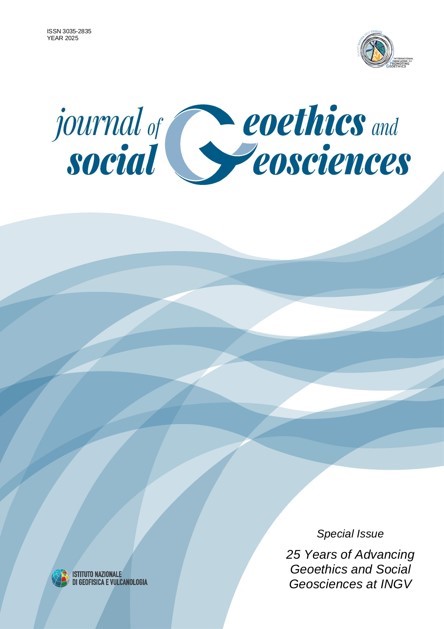Exploring the potential of collaboration between geoscientists and artists for a sustainable future of the Earth
Main Article Content
Abstract
Over the past two decades, communication technologies have transformed the world into a global village, thereby facilitating the rapid dissemination of information. This development enables life-saving data exchanges but also alters perception, leading to a disconnection from nature and a decline in environmental awareness and conservation efforts. Engagement with digital devices detaches individuals from the natural world, highlighting the need for initiatives that promote nature-based approaches and outdoor activities to foster ecological responsibility. Some studies have highlighted that even if people are aware of ecological problems that can interfere with human health, they resist adopting virtual behaviour. This article examines the impact of communication technologies on planetary sustainability education and alienation from nature since industrialization, contributing to humanity’s maladaptive environmental relationship. It also explores the potential of collaboration between geoscientists and artists to address this issue through personal experiences and interdisciplinary insights.
In 2015, the Istituto Nazionale di Geofisica e Vulcanologia (INGV) proposed the first session at the European Geosciences Union (EGU) General Assembly to bring together scientists and artists.
This article retraces this journey, demonstrating how combining these two cultures can foster planetary respect and enhance the well-being of both scientists and artists. By using narratives at INGV and geo-mythology to educate young learners, enthusiasm and curiosity about the territory they inhabit have been raised. This approach has boosted their creativity and provided a unique opportunity to increase awareness of territorial hazards while simultaneously appreciating its natural beauty.
Similarly, integrating art into scientific communities has shown significant potential for disseminating scientific knowledge to the public, emotionally engaging audiences, reconnecting people with nature, and enabling scientists and artists to critically examine issues relevant to their respective fields. Finally, the implications of geoethics are explored.
Article Details
Issue
Section

This work is licensed under a Creative Commons Attribution 4.0 International License.

